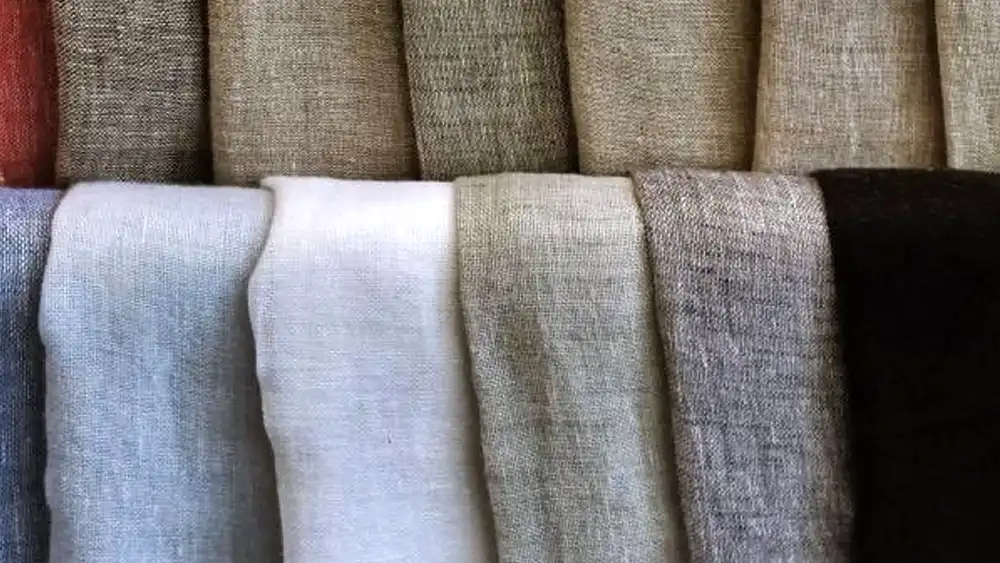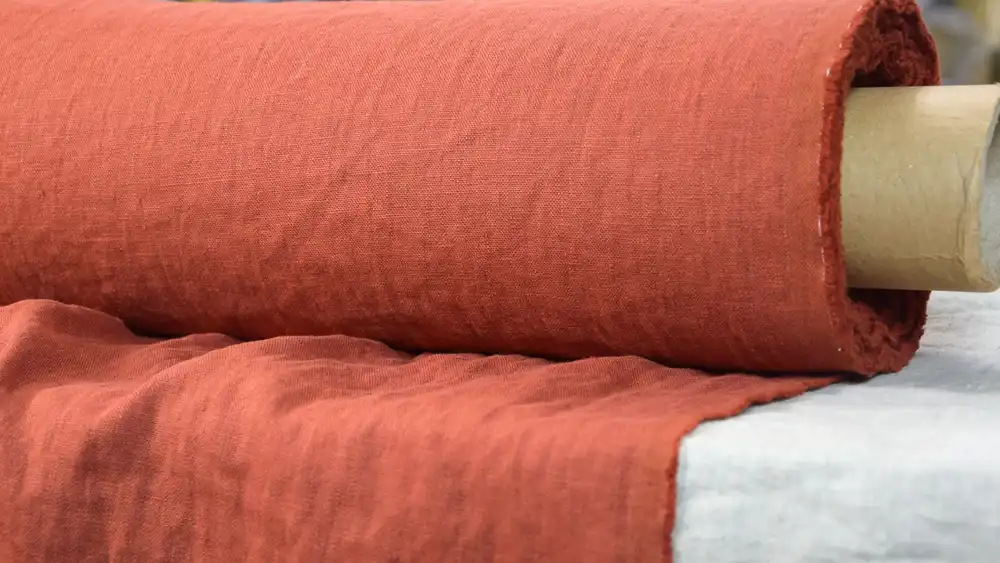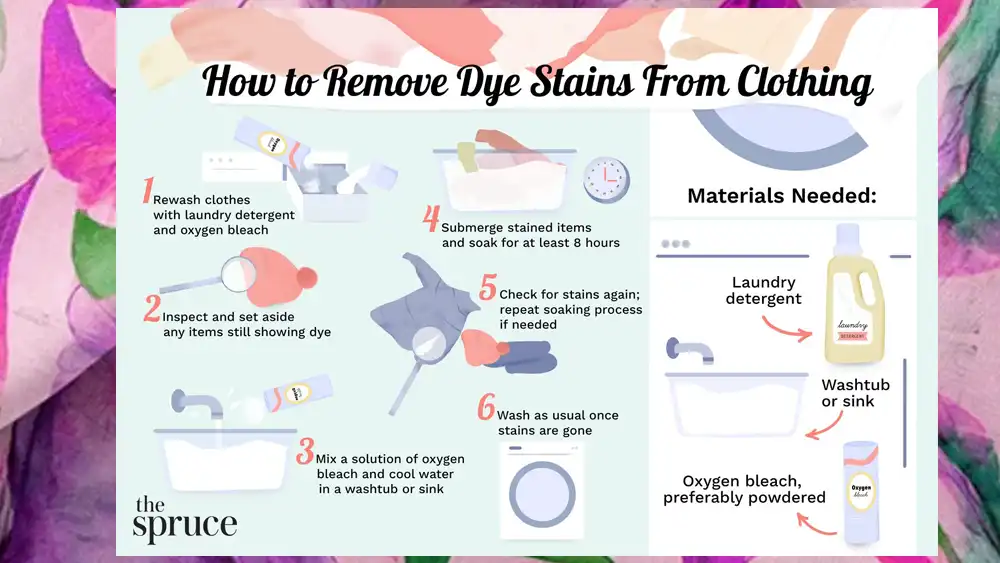Linen is a timeless and versatile natural fabric that has been prized for its exceptional qualities for centuries. While linen is often associated with its classic off-white or natural color, the fabric actually comes in a wide range of hues and shades, offering endless possibilities for creative expression and design.
In this blog post, we’ll delve into the diverse color options available in the world of linen fabric.
Colored Linen Fabric
What Color is Linen Fabric? While the natural, undyed linen tones have a timeless elegance, the world of colored linen fabrics opens up a whole new realm of creative possibilities. Linen’s exceptional ability to hold dye means that this versatile textile can be transformed into a stunning array of hues, from soft pastels to rich, jewel-toned shades.
Embracing Bold and Vibrant Colors
For those seeking to make a bold statement, linen fabrics in vivid primary colors like deep blue, fiery red, or sunny yellow can instantly infuse a space or garment with energy and visual interest. These saturated linen hues pair beautifully with natural textures and organic materials, creating a striking contrast. Whether used for a vibrant linen sofa, a vibrant linen dress, or bold linen curtains, these vibrant colored linens are sure to captivate the eye.
Soft and Soothing Pastel Linens
On the other end of the spectrum, linen also lends itself beautifully to soft, muted pastel shades. Delicate hues of pink, lavender, mint, and pale blue offer a calming, serene aesthetic that is perfect for creating a relaxing, spa-like ambiance. Pastel linen bedding, table linens, and window treatments can transform a space into a tranquil oasis. These gentle, muted tones also work wonderfully for linen apparel, lending a subtle elegance to everyday outfits.
Sophisticated Neutral Linen Shades
For those seeking a more refined, understated aesthetic, linen also comes in a range of sophisticated neutral tones. Shades of gray, beige, and taupe add depth and elegance to any design, while still showcasing the unique texture and drape of linen fabric. These neutral linen options are particularly versatile, allowing them to seamlessly integrate into a variety of interior styles and personal wardrobes.
Patterned and Printed Linen Fabrics
Beyond solid colors, linen can also be found in a variety of patterned designs. From subtle stripes and checks to intricate floral or geometric prints, these patterned linen fabrics add a dynamic and eye-catching element to any space or garment. Patterned linen curtains, upholstery, or apparel can infuse a room or outfit with a touch of personality and style.
Sustainable Color Choices
As environmental consciousness continues to grow, many consumers are seeking out linen fabrics that are dyed using natural, plant-based pigments or low-impact dyes. These eco-friendly color options not only reduce the environmental impact of textile production but also offer a unique, artisanal aesthetic that celebrates the inherent beauty of the linen fiber.
Regardless of the specific color or pattern, linen’s versatility and timeless appeal make it a beloved fabric for a wide range of applications, from high-end fashion to cozy home furnishings. By exploring the diverse color palette of linen, you can unlock endless possibilities for creating beautiful, authentic, and sustainable textile designs.
Natural Color Linen Fabric

Natural Color Linen: Natural color linen refers to linen fabric that has not been dyed or bleached, retaining the inherent color of the flax plant fibers. The natural color of linen can range from a creamy off-white to a slightly beige or light tan hue.
Characteristics of Natural Color Linen:
- Color Appearance: The natural color of linen varies based on the specific variety of flax plant used and the processing methods. It typically has a soft, muted tone that can complement a wide range of design styles.
- Texture and Drape: Linen is known for its crisp, slightly textured hand-feel and a natural, relaxed drape. The natural color does not impact the inherent properties of the fabric.
- Durability and Breathability: Linen is an extremely durable and breathable fabric, making natural color linen suitable for a variety of applications, such as clothing, upholstery, and home decor items.
- Sustainability: Natural color linen is considered a more sustainable option as it does not require additional dyeing or bleaching processes, reducing the environmental impact.
Applications of Natural Color Linen: Natural color linen can be used for:
- Apparel: Shirts, dresses, pants, and jackets
- Home Textiles: Curtains, upholstery, bedding, and table linens
- Accessories: Bags, pouches, and decorative items
- Interiors: Throw pillows, wall hangings, and other home decor elements
Caring for Natural Color Linen:
- Washing: Linen can be machine-washed using a gentle cycle and mild detergent. Avoid using bleach or high-heat drying, as this can cause the fabric to become stiff or discolored.
- Ironing: Linen benefits from regular ironing to maintain its crisp appearance. Use a medium to high heat setting and iron the fabric while slightly damp.
- Storage: Store linen items in a cool, dry place to prevent discoloration or damage from humidity or direct sunlight.
Natural color linen offers a timeless and versatile option for those seeking a sustainable, durable, and visually appealing fabric for a wide range of applications.
Rust Colored Linen Fabric

Rust Color: Rust is a reddish-brown color that is often associated with the oxidation of iron. In the context of fabric, a “rust-colored” linen would have a similar reddish-brown hue, typically achieved through dyeing or the use of natural pigments.
Characteristics of Rust-Colored Linen:
- Color Appearance: Rust-colored linen has a warm, earthy tone that can range from a light terracotta to a deeper, more saturated reddish-brown shade.
- Texture and Drape: Linen is known for its crisp, slightly textured hand-feel and a natural, relaxed drape. The rust coloration does not significantly impact the inherent properties of the linen fabric.
- Durability and Breathability: Linen is a durable and breathable fabric, making rust-colored linen suitable for a variety of applications, such as clothing, upholstery, and home decor items.
- Versatility: The rust color of the linen fabric can complement a wide range of design styles, from rustic and earthy to modern and minimalist.
Applications of Rust-Colored Linen: Rust-colored linen can be used for:
- Apparel: Shirts, dresses, pants, and jackets
- Home Textiles: Curtains, upholstery, bedding, and table linens
- Accessories: Bags, pouches, and decorative items
- Interiors: Throw pillows, wall hangings, and other home decor elements
Caring for Rust-Colored Linen:
- Washing: Linen can be machine-washed using a gentle cycle and mild detergent. Avoid using bleach or high-heat drying, as this can cause the fabric to become stiff or discolored.
- Ironing: Linen benefits from regular ironing to maintain its crisp appearance. Use a medium to high heat setting and iron the fabric while slightly damp.
- Storage: Store linen items in a cool, dry place to prevent discoloration or damage from humidity or direct sunlight.
By understanding the characteristics and applications of rust-colored linen fabric, you can make informed decisions when selecting and using this versatile and visually appealing material.
Watercolor Linen Fabric

Watercolor Linen: Watercolor linen refers to a type of linen fabric that has been dyed or printed with a watercolor-inspired pattern or effect. This technique creates a soft, muted, and often abstract or impressionistic appearance on the fabric.
Characteristics of Watercolor Linen:
- Color and Pattern: The watercolor effect on the linen fabric results in a unique, fluid, and often multi-hued appearance, mimicking the look of a watercolor painting. The colors can range from soft pastels to more vibrant hues.
- Texture and Drape: Linen is known for its crisp, slightly textured hand-feel and a natural, relaxed drape. The watercolor treatment does not significantly impact the inherent properties of the linen fabric.
- Durability and Breathability: Linen is a durable and breathable fabric, making watercolor linen suitable for a variety of applications, such as clothing, upholstery, and home decor items.
- Versatility: The watercolor effect on the linen fabric can create a range of design possibilities, from delicate and romantic to modern and abstract, making it a versatile choice for various styles.
Applications of Watercolor Linen: Watercolor linen can be used for:
- Apparel: Dresses, blouses, and other clothing items
- Home Textiles: Curtains, upholstery, bedding, and table linens
- Accessories: Scarves, bags, and decorative items
- Interiors: Throw pillows, wall hangings, and other home decor elements
Caring for Watercolor Linen:
- Washing: Linen can be machine-washed using a gentle cycle and mild detergent. Avoid using bleach or high-heat drying, as this can cause the fabric to become stiff or discolored.
- Ironing: Linen benefits from regular ironing to maintain its crisp appearance. Use a medium to high heat setting and iron the fabric while slightly damp.
- Storage: Store linen items in a cool, dry place to prevent discoloration or damage from humidity or direct sunlight.
Watercolor linen offers a unique and visually striking option for those seeking a natural, breathable fabric with a distinctive artistic flair. Its versatility makes it a popular choice for a wide range of fashion and home decor applications.
Vibrant Linen Colors
While the natural linen palette is timeless, modern textile processing techniques have expanded the color options available. Today, linen can be found in a stunning array of vibrant hues, ranging from bold primary colors to soft, muted pastels. From rich, jewel-toned blues and greens to vibrant reds and yellows, linen’s ability to hold dye exceptionally well allows designers and fashion enthusiasts to explore a spectrum of colorful possibilities.
Sophisticated Neutrals
In addition to the classic natural tones, linen also comes in a range of sophisticated neutral shades that add depth and elegance to any design. Shades of gray, beige, and taupe offer a refined and understated elegance, while still showcasing the unique texture and drape of linen fabric. These neutral linen options are particularly versatile, allowing them to seamlessly integrate into a variety of interior styles and personal wardrobes.
Patterned Linen
For those seeking even more visual interest, linen can also be found in a variety of patterned designs. From subtle stripes and checks to intricate floral or geometric prints, patterned linen fabrics add a dynamic and eye-catching element to any space or garment. These patterned linen textiles allow designers and consumers to infuse their spaces and wardrobes with a touch of personality and style.
Sustainable Color Choices
Increasingly, eco-conscious consumers are seeking out linen fabrics that are dyed using natural, plant-based pigments or low-impact dyes. These sustainable color options not only reduce the environmental impact of textile production but also offer a unique, artisanal aesthetic that celebrates the inherent beauty of the linen fiber.
Regardless of the specific color or pattern, linen’s versatility and timeless appeal make it a beloved fabric for a wide range of applications, from high-end fashion to cozy home furnishings. By exploring the diverse color palette of linen, you can unlock endless possibilities for creating beautiful, authentic, and sustainable textile designs.
Incorporating Linen Color into Your Lifestyle
With such a wide range of color possibilities, linen fabric offers endless opportunities to incorporate its natural beauty and elegance into your everyday life.
Fashion and Apparel
In the world of fashion, linen’s color versatility allows you to create timeless, sophisticated looks. Classic natural and neutral linen pieces, such as shirts, dresses, and trousers, can serve as a versatile foundation for any wardrobe. Alternatively, vibrant linen garments in bold hues can make a striking style statement.
Home Decor
Linen’s exceptional color-holding abilities make it an ideal choice for home textiles and furnishings. From luxurious linen bedding and table linens to elegant curtains and upholstery, linen’s diverse color palette can transform any living space. Mix and match different linen hues to create visually striking color palettes that reflect your personal style.
Accessories and Accents
Linen’s color diversity extends beyond apparel and home decor. Linen accessories, such as tote bags, throw pillows, and napkins, can be used to introduce pops of color and texture throughout your environment. These linen accents are a simple and effective way to infuse your spaces with the natural elegance of this versatile fabric.
Outdoor Living
The breathability and durability of linen make it a practical choice for outdoor living spaces as well. Linen cushions, umbrellas, and other outdoor textiles can withstand the elements while adding a touch of refined style to your patio, deck, or garden.
How to Remove Color From Linen Fabric?

Here are the steps to remove color from linen fabric:
Assess the Fabric: Determine the type of linen fabric you are working with, as the decolorization process may vary slightly depending on the fabric’s weave, weight, and dye used.
Prepare the Workspace: Ensure you have a well-ventilated area to work in, as some of the decolorizing agents can release fumes. Wear gloves and protective eyewear to avoid skin and eye irritation.
Soak in Bleach Solution:
Mix a solution of warm water and household chlorine bleach. The ratio should be approximately 1 part bleach to 10 parts water.
Fully submerge the linen fabric in the bleach solution and allow it to soak for 10-15 minutes, stirring occasionally.
Monitor the fabric closely, as prolonged exposure to bleach can damage the linen fibers.
Rinse Thoroughly:
After the soaking period, remove the linen fabric from the bleach solution and rinse it thoroughly under running water to remove all traces of the bleach.
Continue rinsing until the water runs clear, ensuring no residual bleach remains on the fabric.
Neutralize the Fabric:
Prepare a neutralizing solution by mixing 1 part white vinegar to 10 parts water.
Soak the rinsed linen fabric in the vinegar solution for 5-10 minutes to neutralize any remaining bleach.
Rinse the fabric again under running water to remove the vinegar solution.
Air Dry:
Gently squeeze or blot the excess water from the linen fabric, being careful not to wring or twist it.
Lay the fabric flat or hang it to air dry, avoiding direct sunlight, which can cause further fading or discoloration.
Inspect and Repeat if Necessary:
Once the linen fabric is dry, inspect it to see if the desired level of color removal has been achieved.
If there are still traces of color, you may need to repeat the bleaching and neutralizing process until the fabric reaches the desired level of lightness.
Condition the Fabric:
After the decolorization process, the linen fabric may feel dry or stiff. To restore its natural softness, you can condition it by using a fabric softener or a mild fabric conditioner during the final rinse.
Remember, always test the decolorization process on a small, inconspicuous area of the linen fabric first to ensure it does not cause any damage or unintended consequences. Proper care and attention are crucial when removing color from delicate linen fabrics.
Embracing the Unique Character of Linen Color
One of the most captivating aspects of linen’s color palette is its ability to evolve and transform over time. As linen is washed and worn, its hues may soften, fade, or develop a beautiful patina, creating a unique and personalized aesthetic. Embracing this natural evolution is part of the charm of incorporating linen into your life.
Whether you prefer the timeless appeal of natural linen tones or the vibrant energy of bold, colorful options, the diverse color spectrum of this exceptional fabric offers endless opportunities for creative expression and personal style. Explore the world of linen color and let it enrich your wardrobe, home, and lifestyle with its natural elegance and timeless beauty.
